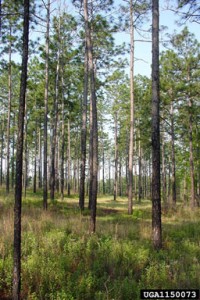New Publication Reviews Key Steps to Forest Health, Protection, and Prevention
go.ncsu.edu/readext?401442
en Español / em Português
El inglés es el idioma de control de esta página. En la medida en que haya algún conflicto entre la traducción al inglés y la traducción, el inglés prevalece.
Al hacer clic en el enlace de traducción se activa un servicio de traducción gratuito para convertir la página al español. Al igual que con cualquier traducción por Internet, la conversión no es sensible al contexto y puede que no traduzca el texto en su significado original. NC State Extension no garantiza la exactitud del texto traducido. Por favor, tenga en cuenta que algunas aplicaciones y/o servicios pueden no funcionar como se espera cuando se traducen.
Português
Inglês é o idioma de controle desta página. Na medida que haja algum conflito entre o texto original em Inglês e a tradução, o Inglês prevalece.
Ao clicar no link de tradução, um serviço gratuito de tradução será ativado para converter a página para o Português. Como em qualquer tradução pela internet, a conversão não é sensivel ao contexto e pode não ocorrer a tradução para o significado orginal. O serviço de Extensão da Carolina do Norte (NC State Extension) não garante a exatidão do texto traduzido. Por favor, observe que algumas funções ou serviços podem não funcionar como esperado após a tradução.
English
English is the controlling language of this page. To the extent there is any conflict between the English text and the translation, English controls.
Clicking on the translation link activates a free translation service to convert the page to Spanish. As with any Internet translation, the conversion is not context-sensitive and may not translate the text to its original meaning. NC State Extension does not guarantee the accuracy of the translated text. Please note that some applications and/or services may not function as expected when translated.
Collapse ▲ In Extension Forestry, we frequently hear the question from landowners “How do I
In Extension Forestry, we frequently hear the question from landowners “How do I
control the latest forest pest?” A new publication aims to address that question in a proactive way, entitled Promoting a Healthy Forest on Your Land by Dr. David Coyle, Southern Regional Extension Forestry-University of Georgia, and Dr. Mark Megalos, North Carolina State University.
The publication frames the factors that can reduce or degrade the health of our forests, including native and exotic pests, past land uses, weather events, long term climate changes, and wildfires.
“The forest and its pests are universal and potentially daunting,” Coyle said. “Our goal was to break down the monitoring process into simple steps and a list of resources.”
“ A healthy forest is an achievable. What we attempt in the publication is to distill actions into 3 general steps: monitor, modify and manage. Taking small, simple, inexpensive steps is our goal with prevention being the dominant theme.” Megalos comments.
Find out about additional pest management publications and insights at the following websites and links (by topic):
Southern Pine Beetles
Southern Forest Health Southern Pine Beetle Information
University of Florida Southern Pine Beetle Page
US Forest Service Southern Pine Beetle Leaflet
University of Kentucky Southern Pine Beetle Page
Emerald Ash Borer
Emerald Ash Borer Information Network
Southern Forest Health Emerald Ash Borer Information
US Department of Agriculture Emerald Ash Borer Page
Redbay Ambrosia Beetle and Laurel Wilt
http://southernforesthealth.net/fungi/laurel-wilt
http://www.ncforestservice.gov/forest_health/forest_health_laurelwiltfaq.htm
http://www.forestry.alabama.gov/LaurelWilt.aspx?bv=3
Gypsy Moth
http://southernforesthealth.net/insects/gypsy-moth
http://www.na.fs.fed.us/SPFO/pubs/fidls/gypsymoth/gypsy.htm
Cogongrass
http://southernforesthealth.net/weeds/cogongrass
http://www.invasivespeciesinfo.gov/plants/cogongrass.shtml
http://plants.usda.gov/plantguide/pdf/pg_lisi.pdf
http://southernforesthealth.net/weeds/chinese-privet


